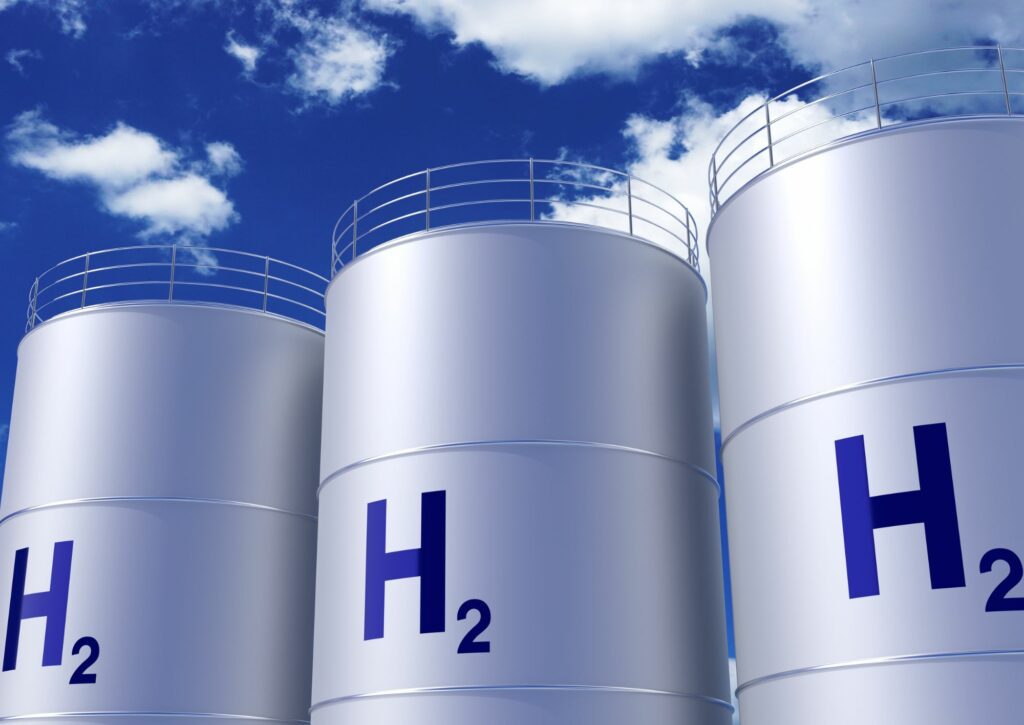The accelerating energy transformation appears to be the greatest challenge of the times we live in. Great importance is attached to generating energy in a low- or zero-emission way. The technology using hydrogen for this purpose is developing extremely rapidly.
Green hydrogen is the future!
For hydrogen to be recognized as an ecological energy source, it must be produced and used in such a way that no harmful substances are produced. This is ensured by the process of electrolysis of water, i.e. a process during which an electric current flows through a substance, resulting in changes in its chemical structure. Water electrolysis allows obtaining hydrogen of very high purity. If we also use energy from renewable sources when obtaining hydrogen, it helps in decarbonization, contributing to the production of “green hydrogen”.What are the types of hydrogen electrolysis? Let’s start with alkaline electrolysis
The oldest and most developed hydrogen technology is alkaline electrolysis. There are electrolysers that can produce up to 60 kg of hydrogen per hour, and given its relatively long life, the conclusions are promising, especially considering the economic efficiency. On the other hand, alkaline electrolysis has the disadvantage that it is not flexible, which is of great importance in the case of cooperation with renewable energy sources. Due to these limitations, scientists are constantly looking for better and more promising methods.
Electrolysers with polymer electrolyte membrane (PEM) – what is it?
For this reason, new methods are being experimented with, resulting in electrolyzers with a polymer electrolyte membrane (PEM – polymer electrolyte membrane or proton exchange membrane). They differ from the previously mentioned alkaline electrolysis in that a different type of electrolyte is used. It is a solid polymer that can only use deionized water. This method has many advantages, including that high current density and efficiency can be achieved. Moreover, the hydrogen obtained in this way has a high level of purity. Unfortunately, there are also some disadvantages, including the high cost of materials.
High-temperature electrolysis of water vapor – what do we know about it?
Due to these shortcomings, efforts are being made to improve this process by performing electrolysis at high temperatures. This ensures high efficiency due to the smaller amount of electricity that is needed. What is most important – the heat necessary to raise the temperature can be obtained from renewable sources. High-temperature electrolysis of water vapor takes place at very high temperatures, ranging from 750 to 950 degrees Celsius. This high temperature results in less electricity (by about 35%) than electrolysis that takes place at a lower temperature. But that’s not all, because the electrolysis efficiency is also worth mentioning, reaching almost 100%. At the same time, it is a new technology, so its use is not yet profitable. Hydrogen energy is gaining importance, thanks to which “green hydrogen” can become a significant source of energy. Many entities, also on our market, strive for this.
An example is the Łaszczyński Brothers’ Central Hydrogen Valley, whose main goal is to stimulate the need for changes in enterprises and the willingness to act towards green transformation in their organizations.
Immerse yourself in the world of water electrolysis!
Learn about the technology that enables the production of clean hydrogen and discover how it can transform our energy future!

